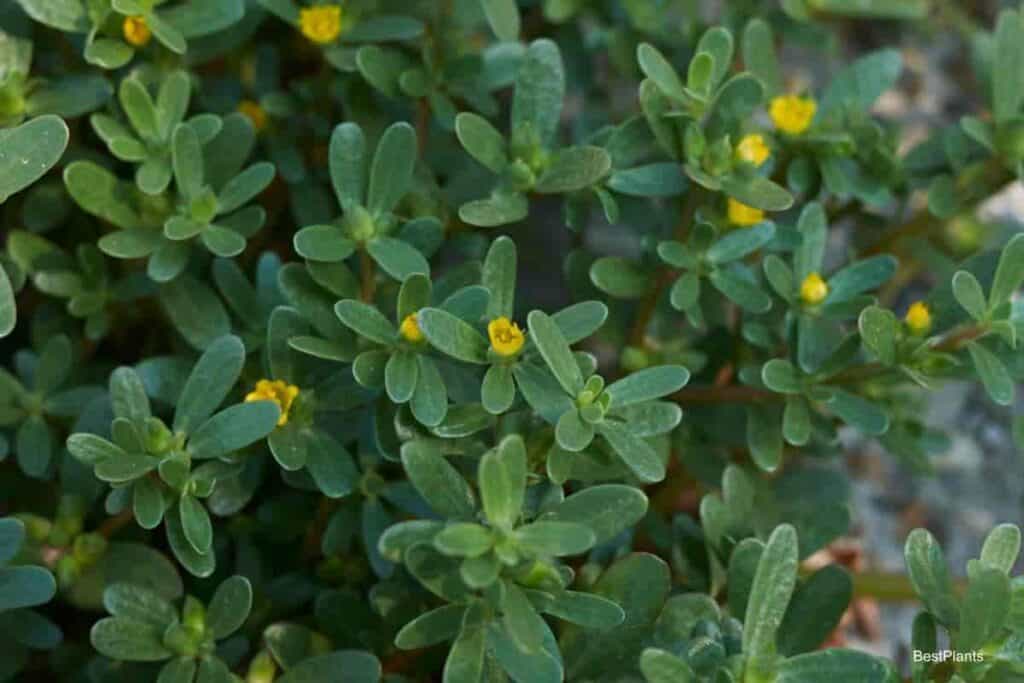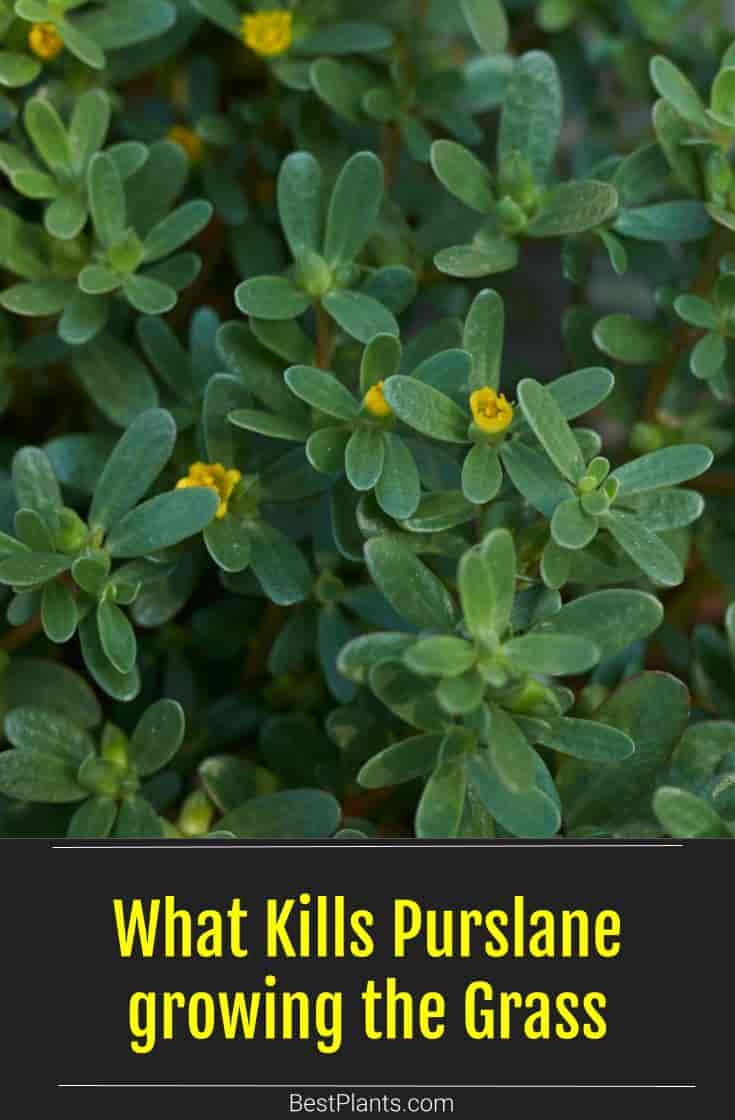Purslane (Portulaca oleracea) is a common garden weed and a superfood.

You may also hear it referred to as:
- Hogweed
- Pigweed
- Fatweed
- Pusley
This leafy green veggie is full of the following:
- Omega 3 fatty acids
- Vitamin A
- Vitamin B
- Vitamin C
- Calcium
- Magnesium
- Potassium
- Manganese
- Iron
It adds flavor and crunch to soups, sandwiches, salads, and stir-fries.
But it also adds unruly patches to your lawn.
What can you do about purslane on your lawn?
Luckily, the best way to deal with this wild plant is to pull it by hand – also known as harvesting.
What Does Purslane Look Like?
This perennial plant is a succulent. It has dark green, fleshy, paddle-shaped leaves on red, fleshy stems, and tiny yellow flowers when it blooms.
The leaves are primarily liquid inside, so it’s easy to tell the plant apart from its deadly look-alike, common spurge, which has a white, sticky sap in its stems.
The plant grows in circular patches, low to the ground, rambling along as a ground cover. It does well in recently-tilled soil or soil with no other vegetation.
This rugged plant pops up in rows between garden plants, dirt-filled cracks in sidewalks, and bare patches in your lawn.
Will Pulling Purslane Kill It?
Pulling the plant will not kill it, but it will stop it from taking over your yard and garden.
The key is to gather it as soon as you see it.
Don’t let it mature and bloom as young plants are easier to pull (harvest), and they are quite tasty!
What If I Want To Kill Purslane?
Killing purslane is more complicated than just pulling it and either making good use of it or tossing it.
But of course, you can kill it with an herbicide containing one or more of these ingredients:
- Benefin & Trifluralin
- Benefin & Oryzalin
- Pendimethalin
- Dithiopyr
These chemicals should be used as a pre-emergent treatment. They are often included in weed and feed combinations.
Note that these chemicals are specifically intended for use with Bermuda grass.
If you have a different sort of grass, you may need to turn to post-emergent products containing one or more of these ingredients:
- Dicamba (3,6-dichloro-2-methoxybenzoic acid)
- MSMA (Monosodium methanearsonate)
- 2,4-D (2,4-Dichlorophenoxyacetic acid)
- MCPP (meta-Chlorophenylpiperazine)
These are common ingredients in the most commercially available herbicides on the market today.
Use Roundup (glyphosate) if you want to kill small patches of purslane in your lawn or eradicate it between pavers, sidewalk cracks, or gravel paths.
What Are Some Natural Ways To Kill Purslane?
If you have no use for purslane, keep your grass well-maintained, healthy and lush.
Purslane likes to grow on bare ground, so if you don’t have any bare soil, you are unlikely to have any purslane.
It’s essential to keep the non-lawn ground covered, as well, to prevent purslane from taking hold.
Be sure to mulch around plants in your ornamental and veggie gardens.
If you are just starting with your lawn, and it is more purslane than grass, you may wish to kill it by covering it with black plastic.
This practice will work, but remember, the plant is easy to scoop up.
Doing so would be quicker than using black plastic, and it will allow you to start cultivating a healthy lawn right away.
Remember: a healthy lawn discourages purslane.
